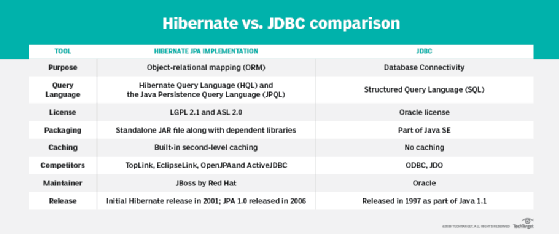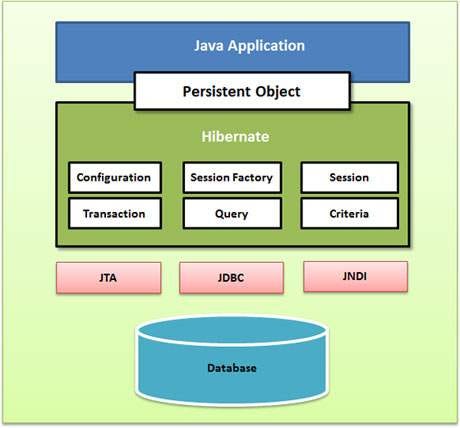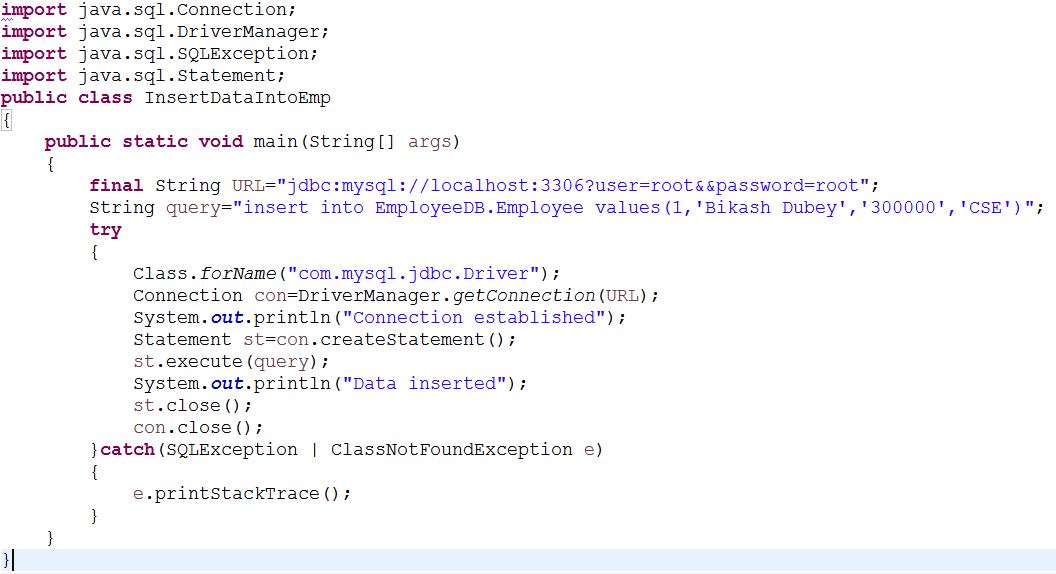Hibernate javatpoint
Hibernate javatpoint
Here's a detailed explanation of Hibernate in Java:
What is Hibernate?
Hibernate is an open-source Object-Relational Mapping (ORM) tool that allows developers to map Java classes to relational databases. It provides a way to interact with databases using Java objects, eliminating the need for handcrafted SQL code.
Key Features of Hibernate:
Object-Relational Mapping: Hibernate maps Java classes to database tables, allowing developers to work with Java objects instead of writing SQL code. SQL Generation: Hibernate generates SQL statements automatically based on the mapping configuration. Lazy Loading: Hibernate provides lazy loading, which means that it loads only the required data from the database, improving performance and reducing memory usage. ** caching**: Hibernate provides a caching mechanism to improve performance by storing frequently accessed data in memory.How Does Hibernate Work?
Here's an overview of how Hibernate works:
Mapping Configuration: Developers create a mapping configuration file that defines how Java classes are mapped to database tables. Session Interface: The Hibernate API provides a session interface, which allows developers to interact with the database using Java objects. SQL Generation: When a developer uses the session interface, Hibernate generates SQL statements based on the mapping configuration and executes them against the database. Data Retrieval: Hibernate retrieves data from the database and returns it as Java objects, allowing developers to work with the data in their application.Advantages of Using Hibernate:
Improved Productivity: Hibernate reduces the need for manual SQL coding, improving developer productivity. Portability: Hibernate provides a layer of abstraction between the application and the database, making it easier to switch between different databases or environments. Flexibility: Hibernate allows developers to write code that is independent of the underlying database technology.Javatpoint:
Here are some key Javatpoints related to Hibernate:
hibernate.cfg.xml: This file contains configuration information for Hibernate, including the database connection settings and mapping definitions. SessionFactory: The SessionFactory interface provides a way to obtain a session instance, which is used to interact with the database. Session: The Session interface represents a conversation between an application and the database, allowing developers to execute SQL statements, retrieve data, and perform other database operations. Transaction: Hibernate supports transactions, which allow developers to group multiple database operations into a single unit of work that can be committed or rolled back.Example Code:
Here's an example of how you might use Hibernate in a Java application:
import org.hibernate.SessionFactory;
import org.hibernate.cfg.Configuration;
public class Main {
public static void main(String[] args) {
// Create a configuration instance
Configuration config = new Configuration();
// Define the mapping for the "User" class
configaddClassPathResource("hibernate.cfg.xml");
// Create a session factory
SessionFactory sessionFactory = config.buildSessionFactory();
// Open a session
Session session = sessionFactory.openSession();
// Execute a SQL query
List users = session.createQuery("from User").list();
// Close the session and factory
session.close();
sessionFactory.close();
}
}
This code snippet demonstrates how to create a Hibernate configuration instance, define the mapping for a "User" class, and execute a SQL query using the Session interface.
What is Java Hibernate used for?

Java Hibernate is an object-relational mapping (ORM) tool that simplifies the interaction between a Java application and a relational database management system, such as MySQL or Oracle. It allows developers to map Java classes to database tables and perform CRUD (Create, Read, Update, Delete) operations on data.
Hibernate was first released in 2001 and has since become one of the most popular ORM tools for Java. Its primary goal is to reduce the complexity and overhead associated with writing raw SQL code to interact with a database. By using Hibernate, developers can focus more on the business logic of their application rather than the database plumbing.
Here are some key features of Hibernate:
ORM: Hibernate provides a way to map Java objects to database tables. This allows developers to work with Java classes and have them automatically translated into database queries. SQL generation: Hibernate can generate SQL code from Java code, eliminating the need for manual SQL scripting.


Some common use cases for Java Hibernate include:
Data storage and retrieval: Hibernate is often used to store and retrieve data from a relational database management system. Business logic implementation: Hibernate simplifies the implementation of business logic that involves working with databases, such as processing orders or managing customer data. Web application development: Hibernate is commonly used in web application development to interact with databases and perform CRUD operations. Enterprise software development: Hibernate is suitable for large-scale enterprise software development projects that require robust database integration.In summary, Java Hibernate simplifies the interaction between a Java application and a relational database management system by providing an ORM framework that generates SQL code, manages transactions, supports lazy loading, and offers caching mechanisms. Its flexibility, scalability, and ease of use make it a popular choice among developers building enterprise-level applications with complex database requirements.





























